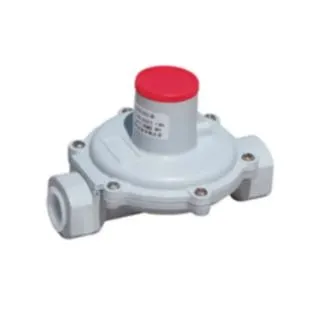
May . 16, 2025 14:23
Back to list
What Role Do Natural Gas Pressure Reducing Valves Play in Industrial Systems?
In the realm of gas distribution and industrial operations, precise control over pressure is essential for safety, efficiency, and optimal performance. Natural gas pressure reducing valves and related components such as gas pressure regulating valves are critical in maintaining stable pressure levels across various systems. These devices work alongside infrastructure like distribution stations and gas distribution stations, often integrated with auxiliary equipment such as electric auxiliary heaters, to ensure the reliable and safe delivery of natural gas.

How Do Natural Gas Pressure Reducing Valves Ensure System Stability?
Natural gas pressure reducing valves are designed to lower the pressure of natural gas from a higher inlet pressure to a safer, more usable outlet pressure. In industrial settings, these valves are installed at key points in the pipeline network to prevent excessive pressure from damaging downstream equipment or posing safety risks. For example, in manufacturing plants where natural gas is used for heating or power generation, a natural gas pressure reducing valve ensures that the gas supply meets the operational requirements of burners, turbines, or other machinery. By maintaining consistent pressure, these valves help avoid fluctuations that could lead to inefficiencies or equipment failure.
What Are the Key Features of Gas Pressure Regulating Valves?
Gas pressure regulating valves, including those designed for natural gas systems, offer versatile solutions for pressure management. These valves often incorporate advanced mechanisms such as diaphragms, springs, or electronic controls to adjust flow rates and maintain desired pressure levels automatically. In gas distribution stations, where large volumes of gas are processed and distributed, gas pressure regulating valves play a pivotal role in balancing supply and demand. They can handle varying input pressures and ensure that the gas exiting the station is at a consistent, safe level for transmission to commercial or residential users.
How Do Distribution Stations Integrate Pressure Control and Heating Solutions?
Distribution stations serve as hubs for receiving, processing, and distributing natural gas. Within these stations, pressure control systems that include natural gas pressure reducing valves and gas pressure regulating valves are integrated with other components to maintain operational integrity. In colder climates, electric auxiliary heaters are often installed near pressure - regulating equipment to prevent freezing or condensation, which could disrupt flow or damage valves. These heaters ensure that the gas remains at an optimal temperature, allowing the valves to function smoothly and reducing the risk of blockages or mechanical issues.
What Factors Influence the Selection of Pressure Control Equipment for Gas Distribution?
When equipping gas distribution stations or industrial pipelines, several factors guide the choice of pressure control devices. The required pressure reduction ratio, flow capacity, and the specific properties of the gas (such as temperature and contaminants) all impact the selection of natural gas pressure reducing valves or gas pressure regulating valves. Additionally, environmental conditions, such as extreme temperatures or high humidity, may necessitate the inclusion of electric auxiliary heaters to protect valves and ensure consistent performance. Compliance with industry standards and safety regulations is also a critical consideration in determining the right equipment for each application.
How Do Electric Auxiliary Heaters Enhance Valve Performance in Cold Environments?
Electric auxiliary heaters are vital in maintaining the functionality of pressure control valves in low - temperature settings. These heaters provide localized warmth to prevent the accumulation of ice or moisture on valve components, which could lead to corrosion, stiffness, or failure. In distribution stations located in regions with harsh winters, installing heaters around gas pressure regulating valves ensures that the equipment remains responsive and accurate, even when external temperatures plummet. This proactive approach to temperature management helps avoid costly downtime and maintains the reliability of the gas distribution network.
FAQs About Natural Gas Pressure Control and Distribution Infrastructure
What Maintenance Practices Ensure Longevity of Pressure Reducing Valves?
Regular inspections and cleaning are essential for natural gas pressure reducing valves and gas pressure regulating valves. This includes checking for leaks, ensuring proper lubrication of moving parts, and verifying that pressure settings align with operational requirements. In gas distribution stations, scheduled maintenance also involves testing the integration of valves with electric auxiliary heaters and other systems to ensure seamless functionality.
Can Pressure Regulating Valves Be Used in Both Low and High - Volume Applications?
Yes, gas pressure regulating valves are designed for a range of applications, from small - scale residential use to large - scale industrial or distribution station environments. Their adaptability lies in adjustable designs that can handle varying flow rates and pressure reduction needs, making them suitable for diverse operational contexts.
How Do Electric Auxiliary Heaters Connect to Existing Valve Systems?
Electric auxiliary heaters are typically installed around valve bodies or adjacent pipelines using secure mounting brackets. They are wired to a control system that monitors temperature and activates heating only when necessary, ensuring energy efficiency while protecting valves from cold - related issues in gas distribution stations or remote pipeline installations.
Latest news
-
What Role Do Pressure Reducers Play in Industrial Systems?NewsJun.12,2025
-
What Role Do Gas Valves Play in Industrial Safety and Functionality?NewsJun.12,2025
-
Key Components in Energy Management and Temperature ControlNewsJun.12,2025
-
Integral Components in Mechanical and Energy SystemsNewsJun.12,2025
-
How Do Industrial Valves and Filters Ensure System Safety and Efficiency?NewsJun.12,2025
-
Essential Components for Industrial Fluid Management: Valves and SystemsNewsJun.12,2025

